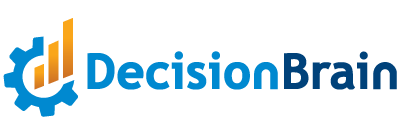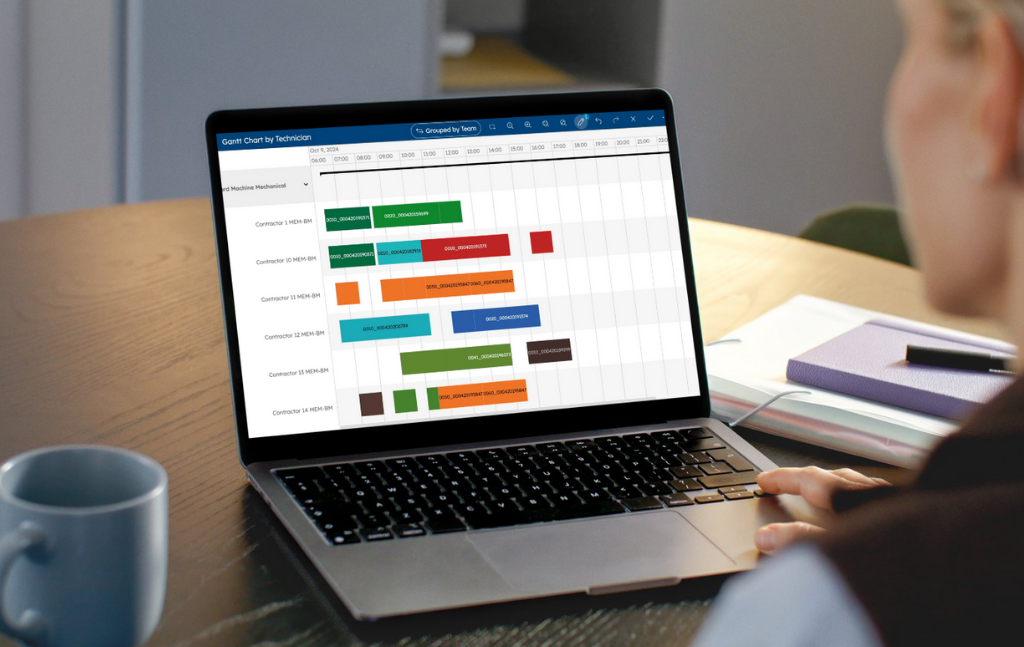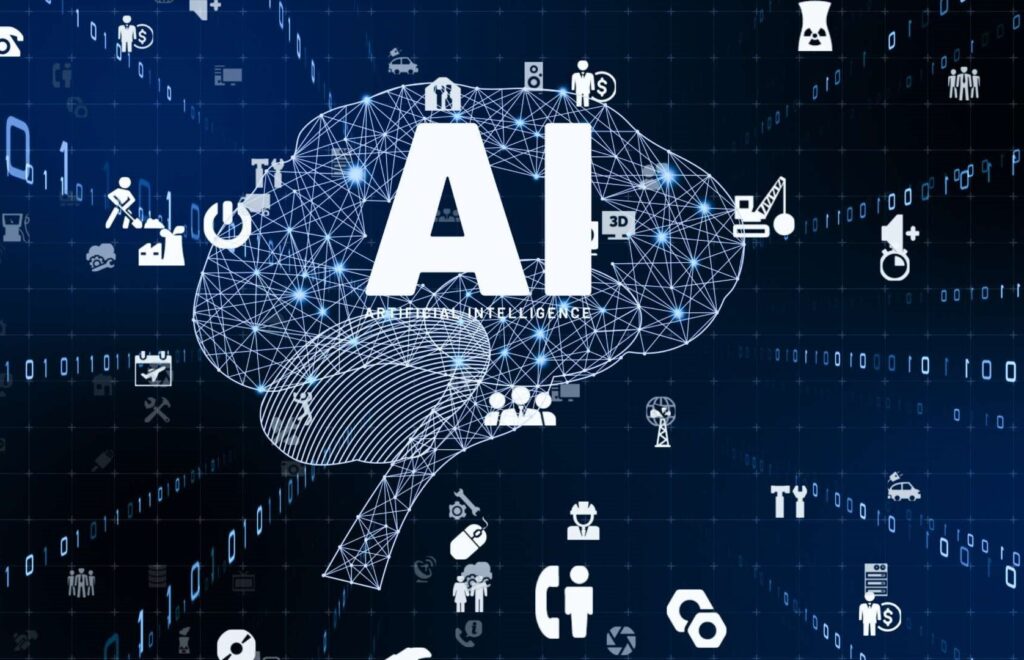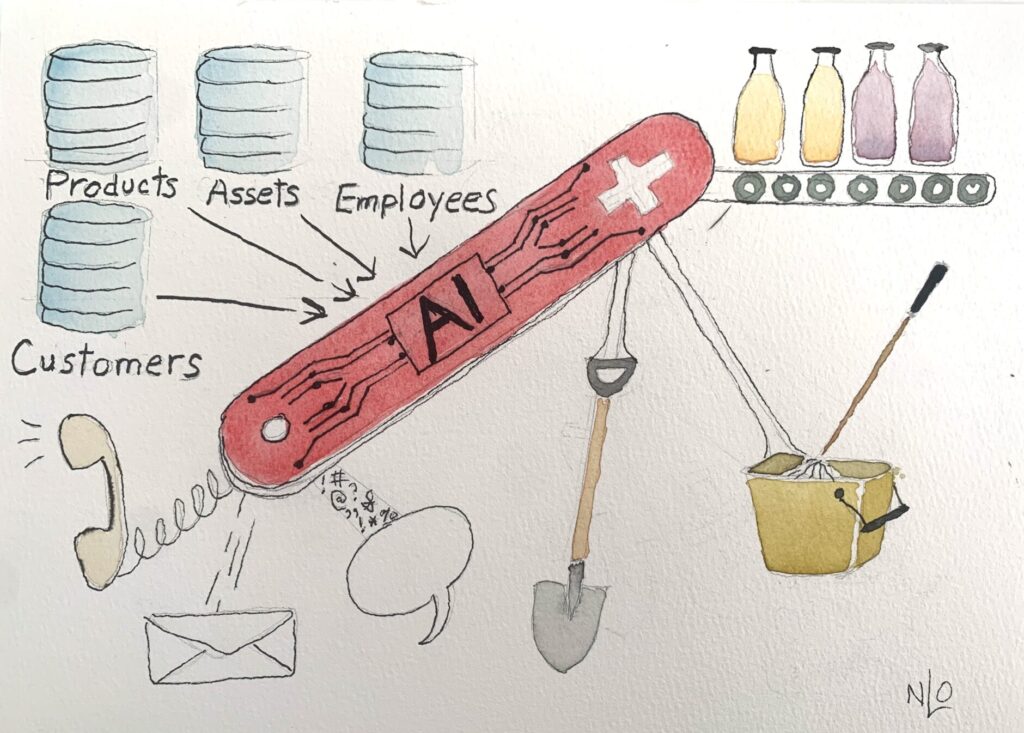Blog
Applying Artificial Intelligence for Workforce/HR Optimization
Labor markets are now trying to settle into the post-pandemic world. Two enduring features of this new environment are worker shortages and work-from-home (WFH) or at least hybrid work models.
The WFH and hybrid work models are advantageous for employee productivity and morale, yet despite having had 2 years of warm-up to this new normal, few organizations have baked in the necessary changes to their systems and processes to get back to pre-pandemic performance levels.
In this paper, we discuss how to work around a number of workforce challenges companies face today and optimize workforce planning and scheduling at a strategic, tactical, and operational level.
Workforce Optimization Factors – Goals and Constraints
What makes workforce optimization challenging is having to balance multiple and often competing goals together with rules, also referred to as constraints. There may be many “feasible” plans that don’t violate any rules or constraints, however, not all plans will satisfy leadership’s strategic objectives related to cost, utilization, response times, etc., or a weighted mix of performance indicators.
Let’s begin by looking at constraints. They may include the following:
Resource Constraints:
- Absences and unavailability
- Skills development
- Activity plans and assignments
Hybrid work adds additional considerations like:
- Tracking telecommuting days
- Ensuring sufficiently skilled employees are on-site to perform activities that can’t be performed remotely
Now let’s look at goals. Let’s say your employees do front and back-office tasks, for example, in a call center. Your goals might be: 1) to minimize labor costs, 2) to keep employees happy, and 3) to make customers happy. If you ease up on the cost controls and overstaff a bit, you may be able to complete service work ahead of customer expectations. Additionally, since your employees aren’t overworked or underpaid, they may show up with a friendlier demeanor. Both are great for customer satisfaction, but may not satisfy management’s budget objectives. So the ability to “adjust these dials” and understand (quantify) the tradeoffs is key to optimization.
Workforce optimization solutions use advanced mathematical algorithms to evaluate millions of different workforce plans and schedule possibilities to quickly arrive at the “best” choice in terms of the specified KPIs. This often means assigning the right task to the right employee for the right time and duration while balancing different objectives. AI-based solutions are able to develop an optimum plan and can also use that plan to perform real-time dispatching/routing. By running these systems on high-performance hardware, either on-premises or on the cloud, one can also make last-minute or near real-time adjustments, including propagating the impact of the adjustments to the rest of the plan/schedule and seeing immediately the impact on the KPIs.
Is a New System Worth It?
Not all workforce problems produce enough return on investment (ROI) to justify implementing a workforce optimization software system. Sometimes spreadsheet-based tools and/or Microsoft Project are sufficient. They can apply simple if-then rules and present data through an intuitive UI, though they can’t find the best of many plan/schedule options like an optimization-based system can. They typically also don’t leverage the breadth of data that is needed to optimize across all important factors since that data resides elsewhere. If time allows, users may get around this by manually entering such data into the system.
At DecisionBrain, we always perform an initial needs assessment with our customers to determine if an optimization-based system is worthwhile. We do this by estimating the degree of optimization potential by looking at factors like:
- How big is the workforce? We find that the ROI for workforces under 300 may not justify the investment in a workforce optimization system
- How much planning/scheduling time is being spent per week/month? More time usually means more complexity and therefore greater optimization potential.
- Is all of the work reactive or planned or a mix? A mix means more optimization potential.
- Is there a variety of different skillsets that need to be considered?
One doesn’t need to check off every item in the above list to get a large ROI. In fact, in contrast to most HR and Workforce Management systems, those devoted specifically to planning or scheduling optimization typically deliver ROI/payback within months, since they usually:
-
- Increase productivity/efficiency by 20% or more.
- Reduce planning time from hours/days to minutes.
What’s the Difference Between Planning and Scheduling?
At DecisionBrain, we break optimization problems up into different time horizons as shown here and discussed below:
Strategic Workforce Design & Optimization
Strategic Workforce Optimization solutions enable decision-makers to establish strategic or high-level workforce parameters like:
- Optimal budget based on an ideal sizing of the workforce
- Appropriate recruitment plan, which includes dates, skills profile and type of contract
- Required training plan, i.e., what training, for whom, for how long
- Ideal share of self-delivery vs. subcontracted workload
As discussed earlier, there are tradeoffs to be considered when answering these strategic questions. A slightly higher training budget could mean more high-skilled resources to satisfy more profitable jobs, but it might take too long. Maybe the training plan can be adjusted or maybe it’s better to hire higher-skilled people even though they may cost more. Or it might just drive overall costs up and not be worth it. The only way to know for sure is to have good data and the ability to put that data into a planning system that shows the tradeoffs, perhaps through interactive scenario comparison and what-if analysis, the impact of different scenarios on the plan.
As another example, one might evaluate the impact on customer service levels given a fixed budget and assuming:
- The number of customers grew by 4% instead of 2%
- Revenue increased by an additional 1%
- Working from home increased from 2 days/week to 3 days/week to attract new employees
Tactical Workforce Planning & Optimization
Tactical planning typically looks out from one quarter to one year in advance, depending on the industry, with one-week granularity. For example, in call centers, some KPIs that are often planned on this time horizon include:
- Call answer rate
- Email response time from the Front-Office
- File processing time for the Back-Office
The optimum plan maximizes productivity, workload, and demand coverage, while juggling:
- Activity allocation and working hours for each employee while respecting their skills and preferences.
- Skills design: Additional skills each employee could acquire to boost capacity for critical activities in accordance with training plans and learning curves.
- Recruitment plans: The number and timing of new hires and their most appropriate training.
- Leave of absences planning: How best to distribute each employee’s absences without violating labor laws and also considering employees’ preferences.
- Allocation of unpopular shifts: e.g., fairly allocate weekend or graveyard shifts.
Operational Workforce Scheduling Optimization
Operational schedules take the tactical plan and assign activities to each employee for the next week or two, sometimes the next day. Good schedules optimize load coverage, KPI achievement in order to:
- Assign activities: to each employee to maximize demand coverage
- Design shifts: i.e., define each employee’s start and end times, breaks, and days off
In the real world, last-minute situations are common. An employee may not show up. A customer may have to change their schedule. A high-priority job may need to be squeezed in. The operational Workforce Scheduling system should have the ability to evaluate the impact of such last-minute scheduled changes and then roll them out in a way that has minimal disruption to the rest of the schedule.
Innovative Workforce Solution
Workforce optimization solutions were, until recently, only within reach of the largest and most technically advanced organizations that could staff AI and Machine Learning experts. This is due to the vast breadth and variety of workforce management requirements across organizations and use cases. This is why the workforce scheduling capabilities of the leading Advanced Planning & Scheduling (APS) systems don’t meet most organizations’ needs and therefore either need to be significantly customized or clients just accept sub-optimal results.
DecisionBrain has over 400 person-years of experience developing fully customized workforce optimization solutions for clients large and small, typically in a matter of weeks, and often for less than the cost of simpler pre-packaged solutions. This is largely thanks to our modular solution architecture that brings ~80% of the solution on day one and makes customization of the rest a breeze.
In addition to leveraging the world’s leading optimization engines, such as IBM CPLEX , DecisionBrain’s workforce optimization solution includes pre-built modules for:
- The User Interface, including
- Interactive Gantt Schedule Views
- What-if scenario analysis
- User management and role-based access
- Containerized deployment to the cloud
- Integrated security featuresd or graveyard shifts.
DecisionBrain has successfully delivered a variety of workforce optimization projects, including scheduling of call center agents, pharmaceuticals representatives, field services technicians, utilities, maintenance and repair staff, and more.
More information is available on our workforce page.
Take a look of our workforce case studies:
Smart Workforce Planning and Scheduling for Call Centers
Field Services Smart Scheduling for Integral-JLL
Workforce Design for Facility Services














